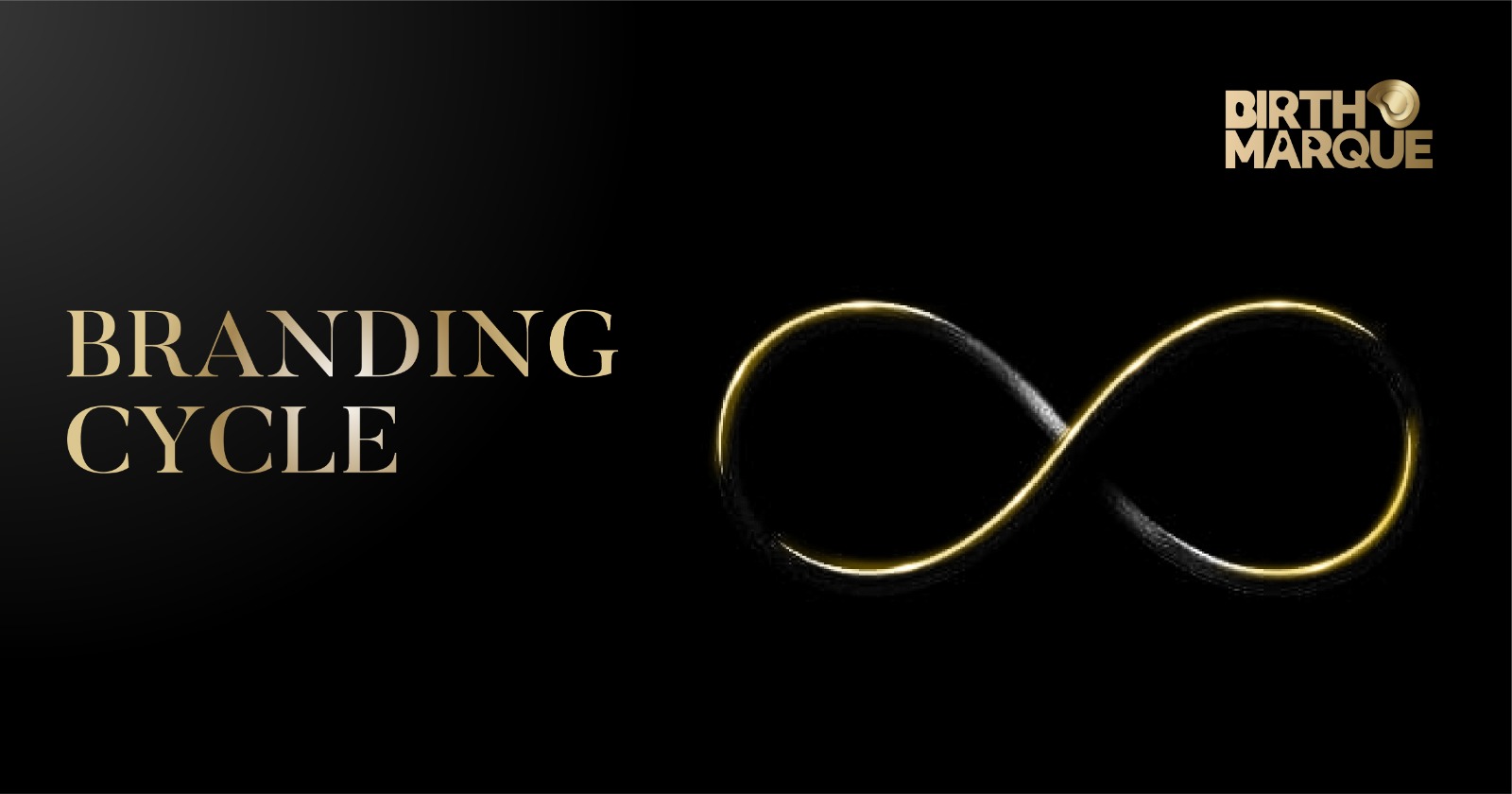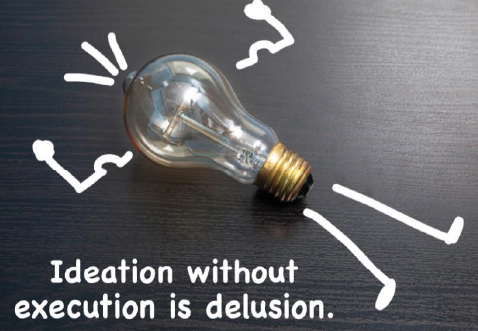
What is the branding cycle?
The branding cycle is a continuous and never-ending process where businesses go through the development, maintenance, and overhaul of their brand. It builds a foundation, allowing you to present your brand. Implementing a correct branding cycle will give you a prominent brand story and a successful business. It’s important to build a branding cycle because it gives you important insights into your audience. This helps in knowing your customers, identifying your niche, considering what matters most to them, where you can find them, how to grab their attention, and also when is the right time to send them a message. For all such things, you should engage with your customers, understand them, find what they want, and keep them updated.
Below are the nine stages one must know to complete an entire branding cycle:
Strength recognition: Understanding the brand’s strengths
Knowing the strength of your brand is the purpose of your brand being in a certain place. Define what makes your company exist in the market and encourage you to put in efforts to satisfy your customers. Ask yourself questions like why you are here, what differentiates you from others, and how you can solve other people’s problems. Doing this should not be for business but to satisfy or help your customers. Winning trust and loyalty is achieved when you concern everyone, and people choose you for the reason why you do something and not for what you do. It’s essential to let people know the purpose because it attracts them to your brand values. By creating slogans, taglines, stories, etc., you can show people your purpose in a very short period of time.
Identifying your target audience: Knowing your target customer
Your brand’s product or service is definitely not for everyone. Categorise your target audiences and find what they want. Focus on your product features and figure out the customers you want to reach. The main aim is to make your content, ads, and emails reachable to audiences. Narrowing down your target audiences has a competitive edge in branding. For example, when there is an app for students, target audiences cover a vast area, so narrow it down to primary schools and then categorise by age group.
Researching competitors: Know the competitors within your industry.
Until you find out who your rivals are, it is difficult to outperform. It is crucial to understand the entire history of your competitors’ strategies for success as well as the reasons behind their failures. To succeed, distinguish your brand from the competition by conducting thorough research. Identifying your rivals is also crucial. There might be hundreds of competitors; pick two or three to fit into your niche or exclude from your business plan according to factors like product calibre, location, etc.
Focusing on the brand mission: conveying the company’s reason for existence
It means you are aware of the values that your brand provides to its customers. Having a purpose for a brand is the same as having a mission for the brand. The main reason to have a brand mission is to remind people that you exist, and it also acts as a foundation for brand-building strategies. Everything, including the logo, message, and voice personality, should focus on the brand’s mission. The mission chosen will be a commitment until the business exists.
Choosing the selling point: finding the key benefits of the brand
Being unique and offering benefits, features, and qualities are the reasons for audiences to choose your brand. Uniqueness always lies in what makes you different from others. Make sure you don’t confuse your brand values with product features. It’s where you prove the customer’s experience, be it personal or professional. Some key qualities you can mention are faster services, ease of use, reliable support, increased productivity, and greater cost effectiveness. Make sure the values reflect in every service that you present.
Choosing the brand voice: The tone of conveying the message
Your brand personality is created by your brand voice. Your brand’s objective, target market, industry, and the platform on which you raise your voice will all have a major influence on the kind of voice tone you decide to create. Your brand’s voice is greatly impacted by tone. It gives your brand a more personal touch and further defines it. The voice, tone, and character vary depending on the intended audience and the platform (blog, webpage, social media, etc.) on which it will be posted. It is imperative that you remain consistent throughout your journey so that you are recognised no matter where your audience finds you.
Create the brand story, explaining the brand, its mission, and more.
A powerful brand story makes your brand memorable and long-lasting, even though people are not watching your ads or services. To create your brand story, put in all your efforts to create a masterpiece.
Step 1: Start from the beginning and make notes. This will describe your story from the start, including everything from the reason to start the brand. Add authenticity, and the story should be pure, with interesting facts and testimonials.
Step 2: Develop the brand statement. Bring in a deeper purpose for your existence, because it matters to your customers and stakeholders. Make sure the statement exists for the betterment of society and not for financial or monetary benefit.
Step 3: Pen the story based on the statement. Make your audience enjoy reading by connecting the company’s history and its values.
Build a brand logo and tagline: Relevant to the brand’s purpose
A brand design logo and slogan need to be created creatively and with technical assistance from experts in the field. Your logo needs to be outstanding because it is your visual identity and will reflect your brand everywhere you go. Your brand’s purpose and mission should be reflected in your tagline.
Consistency in brand personality: Showcase your brand everywhere.
Once you have completed all of the branding phases, it is time to continue being yourself on your path. Make your brand the first choice for customers by showcasing it everywhere you can. When promoting your brand, make sure it is visible on all platforms—blogging, events, media, etc.
Conclusion:
In the end, creating a personal brand identity or a branding cycle is an ongoing process that is highly valuable to building a great brand. This is to help you understand how a brand is built and taken to new heights. A brand is not built overnight; it needs belief, effort, time, and, of course, the branding cycle. The deeper you understand the stages, the better you project your brand to the customers.Birth Marque is the right place to brand with one of the leading and most professional branding companies in Chennai. They provide you with various digital marketing services to market your product, so your organization reaches out to more clients.
Digital Management
Content Management
Social Media Marketing
Search Engine Reputation Management
Website Design & Development
Web Applications
Digital Sales-Driven Campaign
SEO Optimization
Targeted Ads
Mobile Applications
Information Architecture
Influencer Marketing
Wireframing
Organic Discovery
Marketing Automation
Display Ads
Native Ads
Digital marketing
Website development
Zero Ranking Strategies
Product Photography
Product Videography
Digital Factory Shoot Kit
Brand Product Shoot
Influencer Shoot
Social Media Shoot Kit
Advertising Services
Event Photography
2D/3D Animation
Corporate Videos
Testimonial Videos
Sales & Promotional Videos
Industrial Shoot
Model photography
Brand awareness
CSR Campaign
Tv commercial
Advertisement
Youtube content making
Startup Ideation
Rebranding Ideation
CXO Branding
Campaign Based Branding
Brand Stunt
Brand Innovation
Brand Logo Designing
Brand Naming
Brand Nurturing
Logo Designing
Brand Taglines
Corporate Identity Design
Brand Logo Animation
Brand audit
Brand Positioning
Personal branding

About Birth marque
Rebranding is the process of changing the corporate image of an organisation. The idea behind this process is to change the identity of the corporation relating to the competitors in the market. Some companies do it to refresh the logo and collateral, some do it to change the identity due to past controversies. Based off recent studies, we have learnt that on average a company has to rebrand once every 10 years based on the industry trend.
Rebranding is the process of changing the corporate image of an organisation. The idea behind this process is to change the identity of the corporation relating to the competitors in the market. Some companies do it to refresh the logo and collateral, some do it to change the identity due to past controversies.
